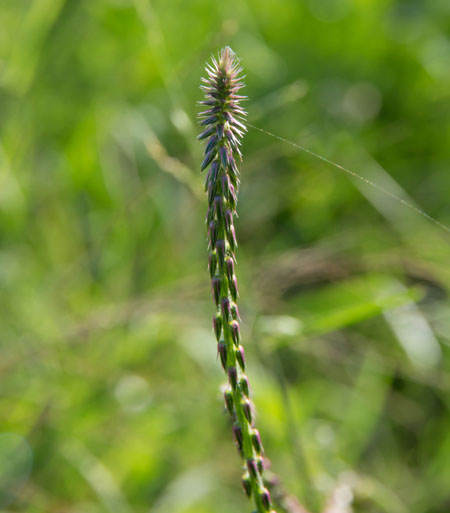Apamarga Achyranthus Aspera Home Remedies: Dysuria, Diabetes
By Dr MS Krishnamurthy MD(Ayu), PhD
Chaff tree is used in Ayurveda for the treatment of Urinary calculi, dysuria, abdominal pain, tumors, gall stones, flatulence etc. It is a small herb growing up to a height of 150 – 200 cm. It is known as Apamarga in Ayurveda.
Table of Contents
Introduction
Botanical name: Achyranthus aspera Linn. Here Akanthes means thorn and aspera refers to roughness.
In ayurveda whole plant is used to make its alkali (Apamarga kshara); whereas its mere seeds as well as leaves are also used in folklore medicinal practices.

In Ayurveda the seeds of Apamarga are appreciated well in two of the contexts namely for making kheer – Apamarga tandula payasam; and to use it as a nasya (errhine) drug- apamarga beeja nasya.
Varieties
Two varieties of Apamarga are commonly found – white and red. Red colored are more penetrative and the other one is mild in nature in its action.
Spiritual significance
In Maharashtra, Kerala and Tamil Nadu, it is used as an amulet so as to tie to the waist or to the arm, which is believed to act against evil spirits. In Atharvanic hymns also the utility of Apamarga as a Raksha dravya (which protects against the infections) is mentioned.
Apamarga kshara
Apamarga kshara is used abundantly in the treatment of warts, external growths, wounds, chronic ulcers etc. Apamarga kshara sutra- an alkaline threat prepared as per Ayurvedic classical literatures is proved to be a medicine of choice in the treatment of Sinus, Fistula, Haemorroids etc.
Read related: Apamarga Kshara – Benefits, Dosage, Ingredients, Side Effects
Home remedies
Achyranthus is used as a folklore medicine as well as home remedy in several illness conditions and few of the safe and effective medications are discussed here below-
Swelling, petechial heamorrhage
1. Apamarga leaf paste in swelling and petechial hemorrhage:
Red colored apamarga leaves are taken and fine paste is made. This is applied over the oedematous lesions, inflamed area and over the petechial parts of the body. This helps to relieve the complaint within 2-3 days.
Read related: KsharaSutra Treatment: Introduction, Indication, Contra Indications
Type II DM
2. Apamarga seed and Methi (Fenugreek) powder in Type II DM:
3 gram each of Apamarga and Methi seeds are taken and fine powder is made. This is taken early in the morning in empty stomach along with one cup of warm water. This is very effective against diabetes and obesity. This decreases the excessive hunger and thirst.
Menstrual disorders
3. Apamarga whole plant decoction in menstrual pain and irregular menstruation:
Whole plant of Apamarga is dried and made into coarse powder. 5-10 gram of the coarse powder is taken, boiled with 200 ml water, reduced to 50 ml. Filtered. This is consumed 1-2 days prior to expected date of menstruation till it stops. This relieves pain and irregularity of the menses.
Read related: Menstrual Pain, Painful Periods – Natural Ayurvedic Herbal Home Remedies
Dysuria, UTI
4. Dried/Wet apamarga twigs soaked in buttermilk in dysuria,UTI,urinary calculi etc:
6-8 twigs of Apamarga are taken and soaked in sour buttermilk (100-200 ml) over night. Next day morning it is macerated well, filtered and consumed. This helps to relieve chronic dysuria, recurrent UTI, urinary calculi, gall stones.
(I have appreciated its best benefits and learnt this formulation from Vriddha vaidya Vijay Jalaram baba, sage of Junagadh, Gujarat during my Post graduation studies at IPGT&R, Jamnagar)
Bleeding conditions
5. Apamarga leaf juice and turmeric powder in bleeding conditions:
5-10 ml of chaff tree leaf juice is taken and mixed with turmeric powder and fine paste is made.This is kept over the bleeding spots. It helps to immediately arrest the bleeding.
Vaidya Badanaje Shankara Bhat used to recommend this recipe to his farmers and field workers who used to get injuries with infection.
As per Vedic literature, people used to practice some herbs for protection and immunity. They took the shape of crude medication in later time period. They were brought to the form of semi formulations or fresh herbal formulations during Samhita phase. In later time period same were modified into medicaments of longer shelf life;
They were able to transport them into one place to another and hence fulfilled the need of the time. In recent days from the same herbs, chemical molecules are extracted and those extracts are being sold as medicines. In future, undoubtedly, several injections will be derived and nano-particles will be synthesized and the basic form and use will be forgot to the mankind.
Click to consult Dr MS Krishnamurthy MD (Ayu), PhD









